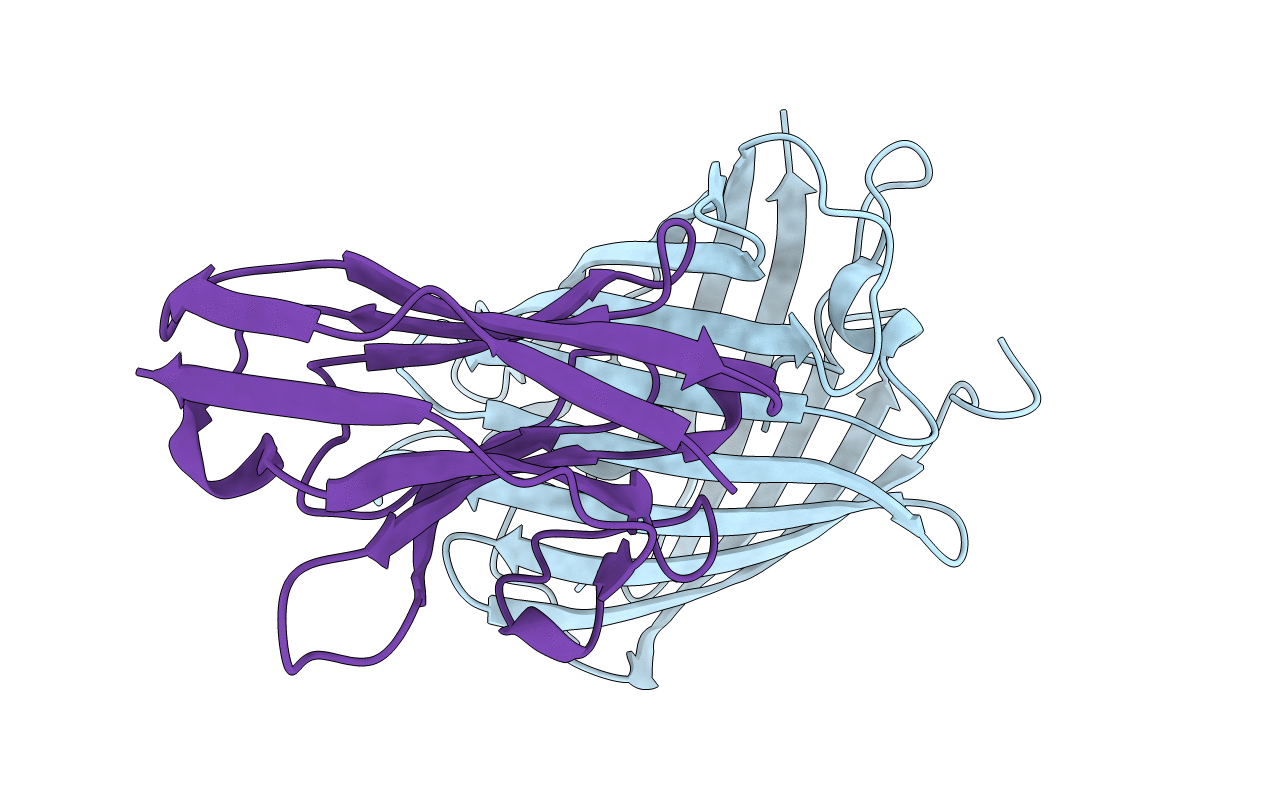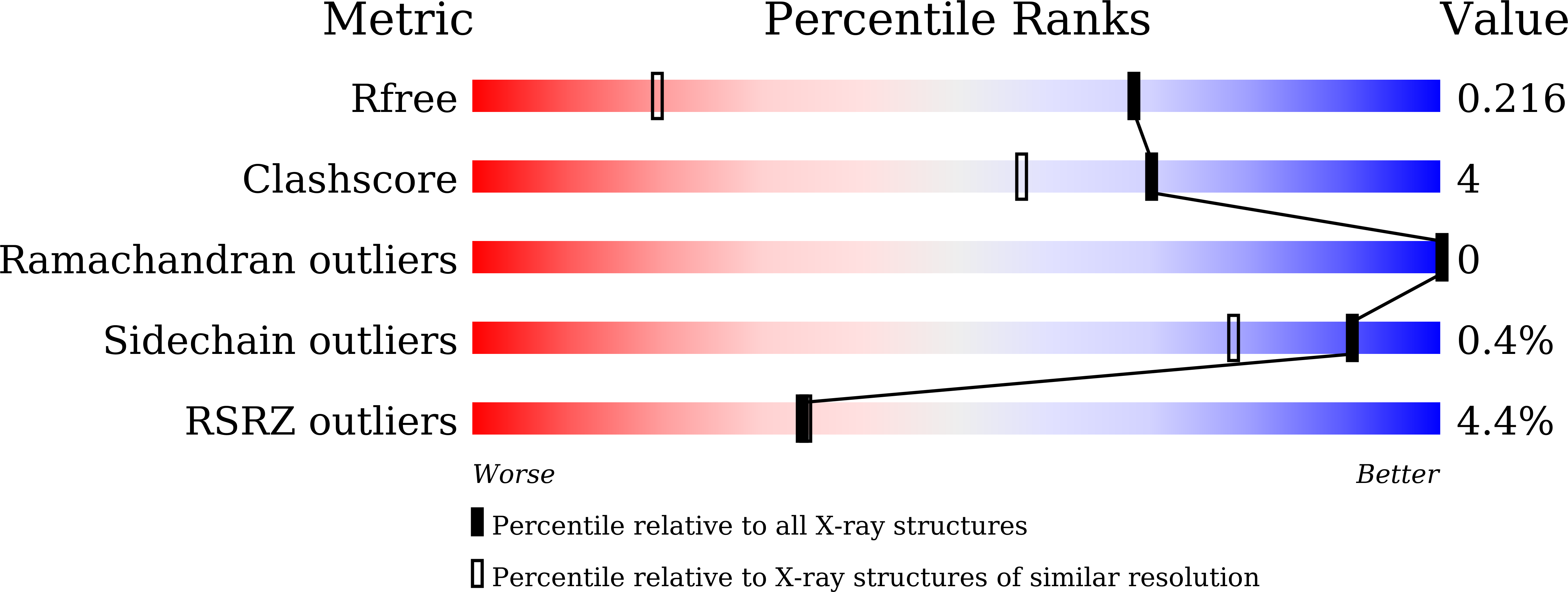
Deposition Date
2018-11-09
Release Date
2019-11-13
Last Version Date
2024-11-06
Entry Detail
PDB ID:
6IR2
Keywords:
Title:
Crystal structure of red fluorescent protein mCherry complexed with the nanobody LaM2 at 1.4 Angstron resolution
Biological Source:
Source Organism:
Anaplasma marginale (Taxon ID: 770)
Camelus bactrianus (Taxon ID: 9837)
Camelus bactrianus (Taxon ID: 9837)
Host Organism:
Method Details:
Experimental Method:
Resolution:
1.39 Å
R-Value Free:
0.21
R-Value Work:
0.19
R-Value Observed:
0.19
Space Group:
P 21 21 21


